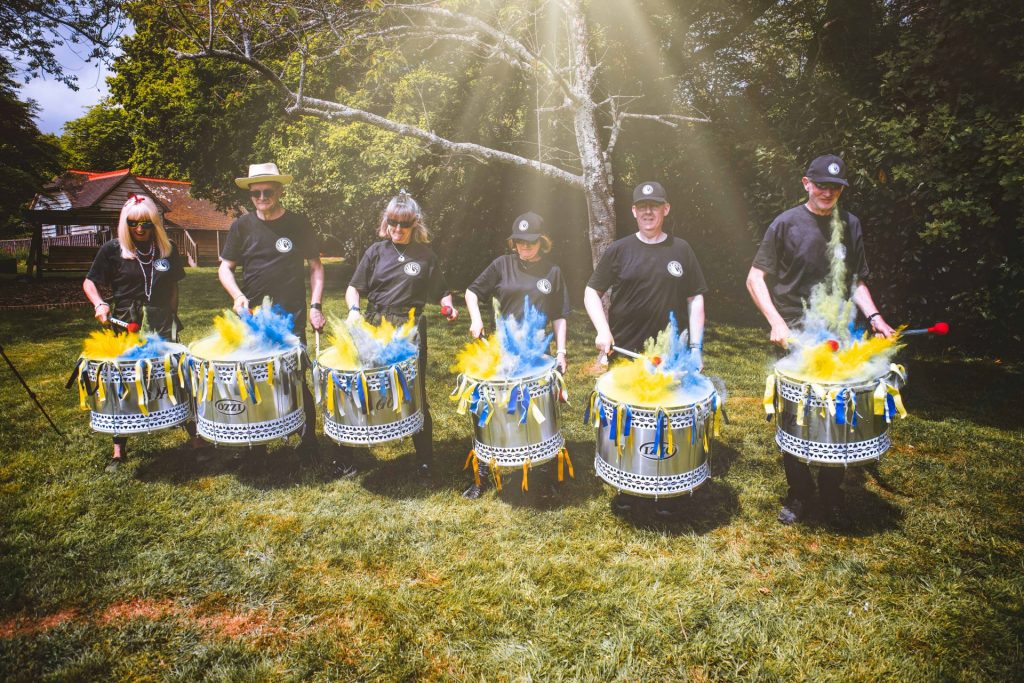
Samba is a Brazilian music genre that originated in Rio de Janeiro in the early 20th century., combining african-rooted grooves with Portuguese military marching bands.
Samba is a term that can be used for lots different styles. The Swan Samba classes and performance group uses a fusion mix across a range of styles but is with a strong samba reggae foundation. Like mainstream reggae, it often has a slightly more laid back groove and has strong beats on 2 and 4 of each bar. That said, certain samba reggae bands are anything but slow…!
Different Samba styles originate from specific areas of Brazil. Maracatu for instance comes from the cities of Recife and Olinda. Ijexa is associated with the north east of Brazil, but can trace its roots back to West African styles of drumming. Samba reggae has parts similar to Batucada and comes from Bahia, north-east Brazil.
The main drums used by the band include Surdo’s, large base drums that drive the main rhythm of the songs, Caixas which are a type of Snare Drums and Repiniques (or reps) which are tuned very high to produce a tone that cuts through the sound of the rest of the ‘Bateria’ and is often the lead instrument.
Ijexa
A groove linked to Candomblé, a religion popular in Bahia and linked to ancestors and the old kingdom in Nigeria. Ijexa is a sacred set of rhythms brought to Salvador by African slaves and is played in Cuba as well but with a different flavour, probably due to the Spanish crossover (as opposed to Portuguese). Originally played exclusively by hand drums, it has been adapted for samba bands. First and foremost, the agogo plays the important rhythm for this groove. Old styles such as Ijexa often have the bass drums taking the expressive solo lead. For this tune, the bass drum (Marcacao) is less rigid and more open to interpretation and improvisation.
Ragga
Likened to dance music, only played on samba drums. It’s individual components are basic and drop in and out in order to create an infectious and very cool rhythm! Linked to Jamaican dancehall music from the 1980s which took on the use of electronic beats and instruments. Has similarities to the Calypso of Trinidad and Banghra of South India.
Funk
A North American influence, drawing upon mainstream black funk artists such as James Brown. Sparse grooves that rely on emphasis of beats 2 and 4 from the caixa and smaller instruments such as the agogo and tambourim. If you want to be funky, say less and say it with swagger and syncopation…
